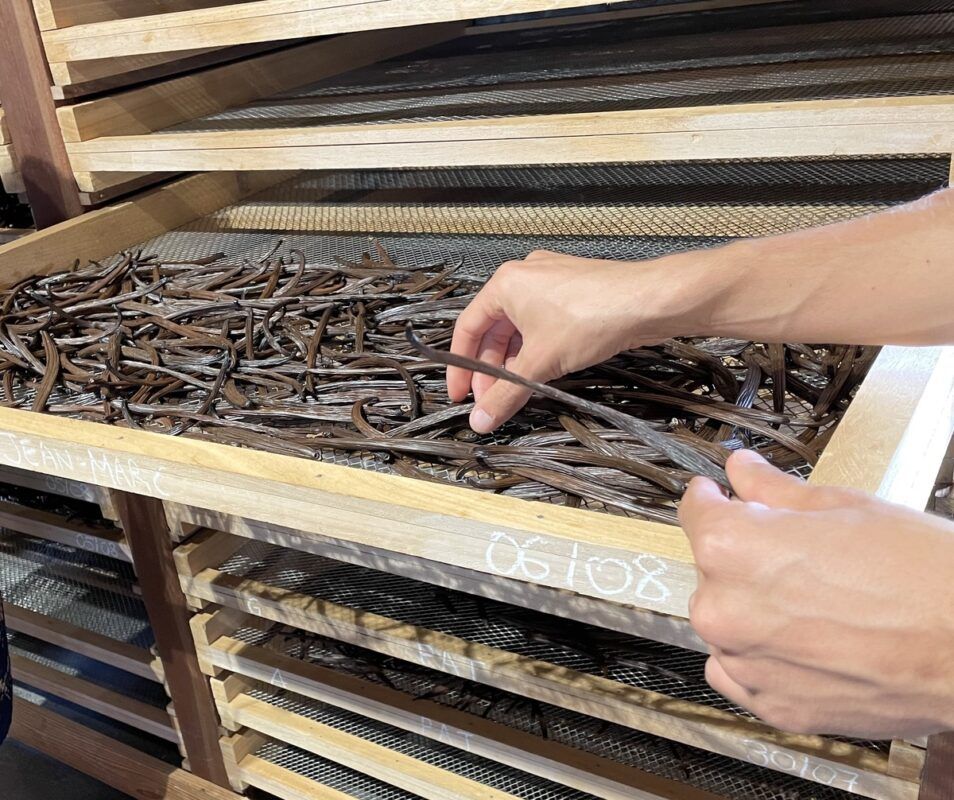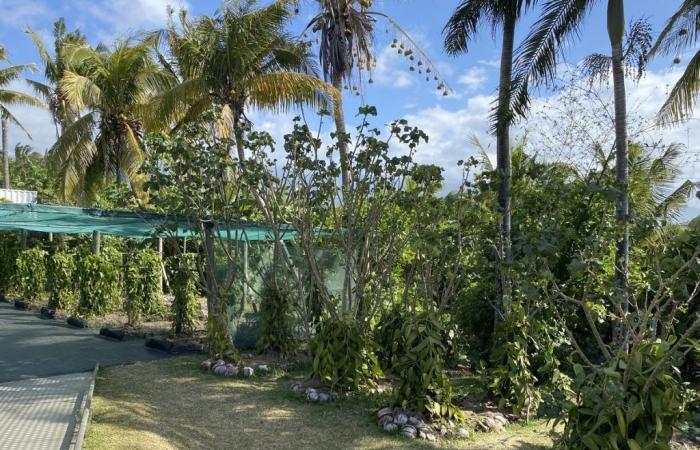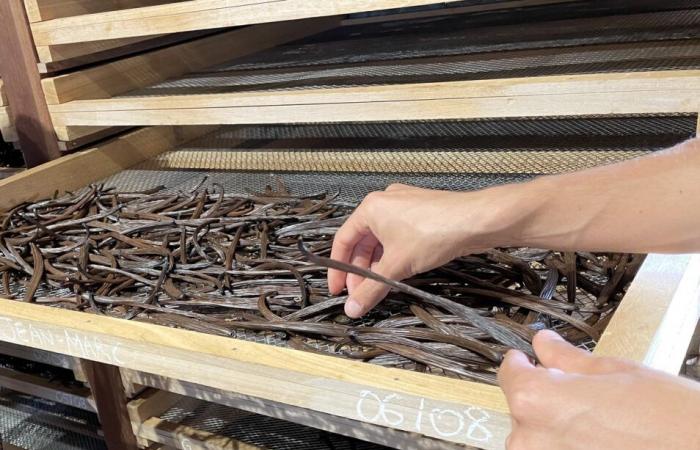La Vanilleraie is located at the Grand – Hazier estate in Sainte-Suzanne, in the north of Reunion Island. In the heart of a Creole estate, visitors discover the production of vanilla, the emblematic spice of Bourbon Island. The route begins with the plantation. “Do you know which family vanilla belongs to? »begins the Vanilleraie employee who leads the visit that day, in August. Question to which some insiders know how to answer: “To the orchid family. » And the guide clarifies: “It is the only orchid whose fruit is edible. »
180 molecules in the vanilla pod
A fragile plant, vanilla grows mainly in the tropics, in regions with good humidity. “In Reunion, it grows especially in the east of the island, which accumulates much more precipitation than the west. » Like lianas, it is not a parasite, but needs support to grow. “It wraps itself around trees such as casuarinas or vacoas. On the plantation, we use stakes with nets above the vanilla trees to prevent them from being in direct sunlight. We also have plants growing under trees. »
A day to pollinate the flower
Each flower is hand-pollinated (see box opposite) by people called “matchmakers”, with flowering taking place between October and December on the island. The best ones can operate in seconds. “The vanilla flower is very ephemeral. There is only one day to pollinate it: it opens in the morning and closes in the afternoon. Afterwards, it’s too late…”
A fertilized flower will give a fruit, the pod which will be picked green after 9 months, in June, July and August. “As soon as a yellow color appears, it must be harvested quickly, while it is still well closed, so that the scents remain inside. »
Impact of climatic conditions
Vanilla is also impacted by climatic conditions. This year, production was 300 kg compared to 1 t in the best years at La Vanilleraie which also buys pods from more than 30 planters on the island. “This is mainly due to rising temperatures. The plant can get rid of the pods during heat peaks and it also needs stress to produce or the temperature contrasts become less strong…”.
A vanilla plant can be harvested for 10 to 15 years. Punches are sometimes made on the pods when planting, to prevent theft. “The preparation begins with scalding. The pods are placed for 3 minutes in water at 65°C. Steaming then allows the pods to transpire and develop their scent. » Then they are left in the sun for 2 weeks, being brought in in the evening and when it rains. “This step limits the development of bacteria and fungi. »
The pods must then be dried indoors for 3 months, on racks. Over this period, “the pods are sorted and matured when they are fine and dry. The vanilla must remain supple, this is a guarantee of quality. » The next stage is maturation for a year in trunks. Finally, the pods of the same length are linked into bundles so that they can be preserved.

“Frosted” vanilla: excellence
“There are 180 molecules in the vanilla pod, not just vanillin, which has the most pronounced scent. At the end, the Reunion vanilla presents notes of prune and licorice. » The excellence of this spice, the most intensely fragrant, is the rare “frosted” vanilla, which is covered with delicate transparent crystals. La Vanilleraie de Sainte-Suzanne has been rewarded several times at the Paris Agricultural Show for the quality of its vanilla.
Agnès Cussonneau
Manual fertilization
Vanilla arrived in Réunion in 1819, but at that time the flowers gave very few pods. Due to the separation of the male and female organs by a membrane, fertilization is rarely successful even in the presence of pollinators. It was Edmond Albius, a 12-year-old Reunionese slave from Sainte-Suzanne, who discovered the artificial pollination process for vanilla in 1841. Even today, each flower is fertilized by hand, with flowering taking place between September and December. This technique is also used all over the world. In Mexico, we can have natural pollination of vanilla thanks to small bees, the melipones, but they are very rare and less efficient. If Réunion was the world’s leading producer of vanilla, the spice is today mainly produced in Madagascar.








